Sir George Jackson was Judge Advocate of the Fleet and a Member of Parliament. He later changed his surname to Duckett to gain an inheritance. Sir George was also a friend and early patron of Captain Cook. The famous explorer and navigator named Point Jackson (in New Zealand) and Port Jackson (now Sydney Harbour, in New South Wales) after Sir George. Much nearer home, his name lives on in the Jackson Square shopping centre and Duckett’s Wharf.
Text about the history of The Port Jackson.
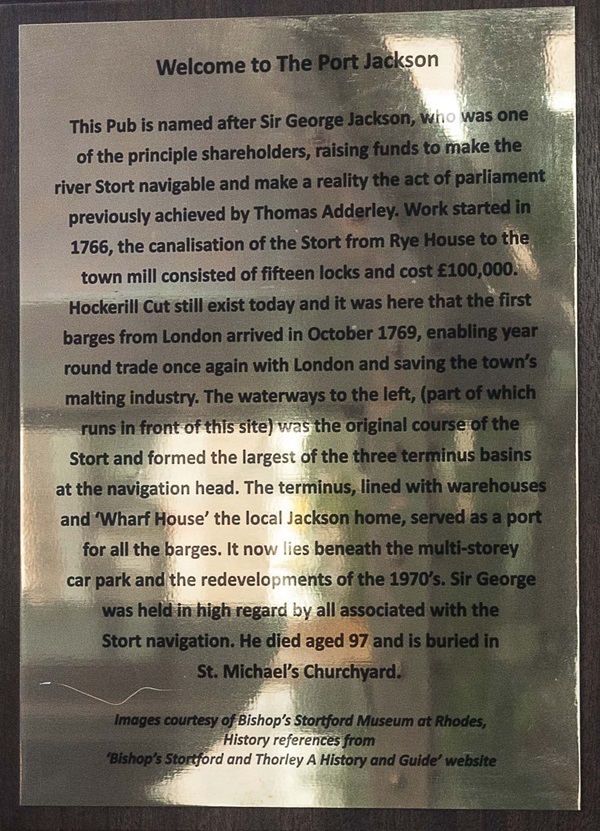
The text reads: This pub was named after Sir George Jackson, who as one of the principle shareholders, raising funds to make the River Stort navigable and make a reality the act of parliament previously achieved by Thomas Adderley. Work started in 1766, the canalisation of the Stort from Rye House to the town mill consisted of fifteen locks and cost £100,000. Hockerill Cut still exists today and it was here that the first barges from London arrived in October 1769, enabling year round trade once again with London and saving the town’s malting industry. The waterways to the left, (part of which runs in front of this site) was the original course of the Stort and formed the largest of the three terminus basins at the navigation head. The terminus, lined with warehouses and ‘Wharf House’ the local Jackson home, served as a port for all the barges. It now lies beneath the multi-storey car park and the redevelopments of the 1970s. Sir George was held in high regard by all associated with the Stort navigation. He died aged 97 and was buried in St Michael’s Churchyard.
Images courtesy of Bishop’s Stortford Museum at Rhodes, history references from Bishop’s Stortford and Thorley A History and Guide website.
A plaque documenting the history of The Port Jackson.
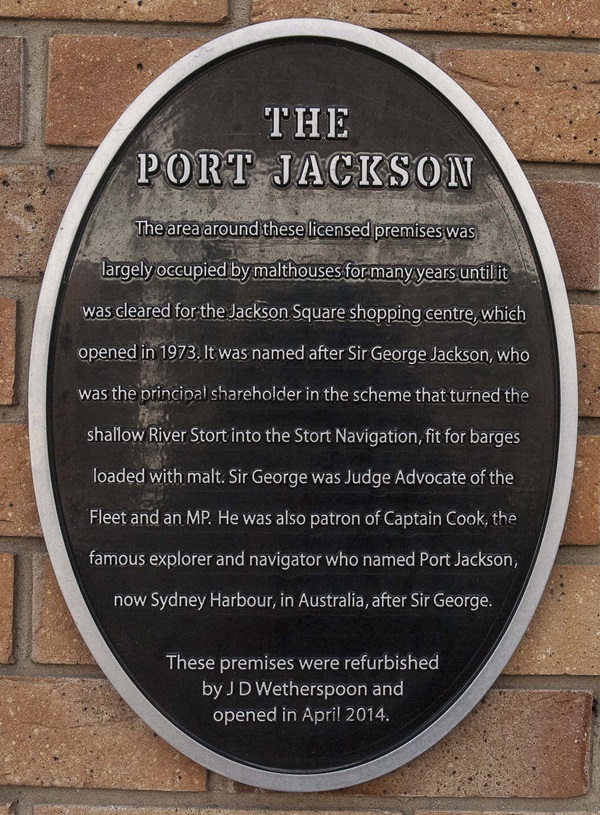
The plaque reads: The area around these licensed premises was largely occupied by malthouses for many years until it was cleared for the Jackson Square shopping centre, who was the principal shareholder in the scheme that turned the shallow River Stort into the Stort Navigation, fit for barges loaded with malt. Sir George was Judge Advocate of the Fleet and an MP. He was also patron of Captain Cook the famous explorer and navigator who named Port Jackson, now Sydney Harbour, in Australia, after Sir George.
These premises were refurbished by J D Wetherspoon and opened in 2014.
A print of the River Stort.
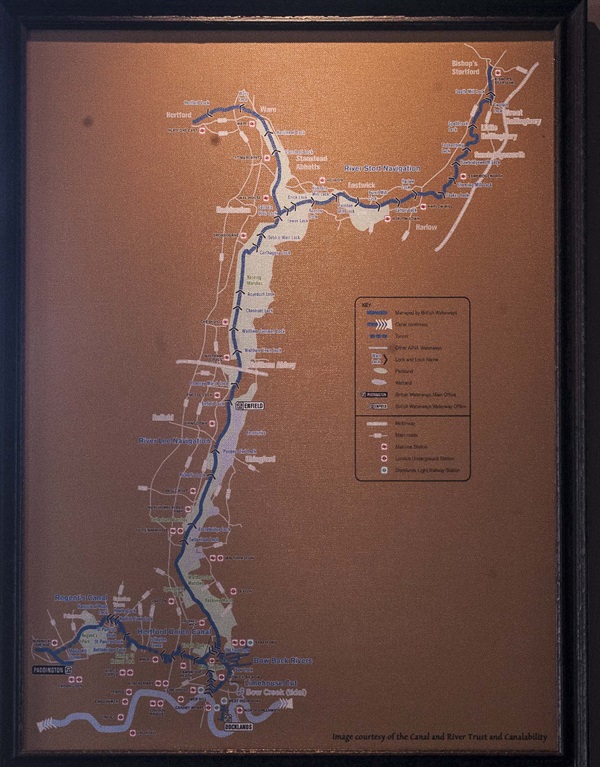
A photograph of Bridge Street, c1890-1900.
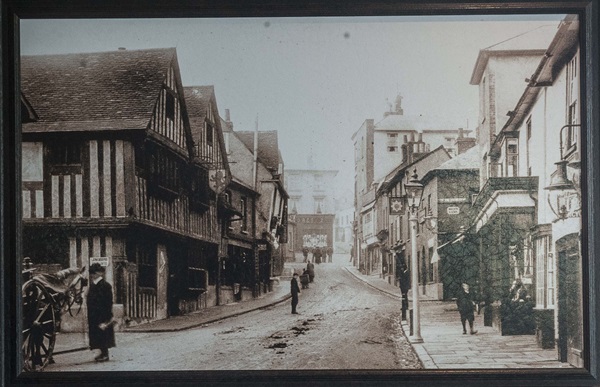
An acrylic painting entitled The Corn Exchange from North Street c1890, by FW Morris.
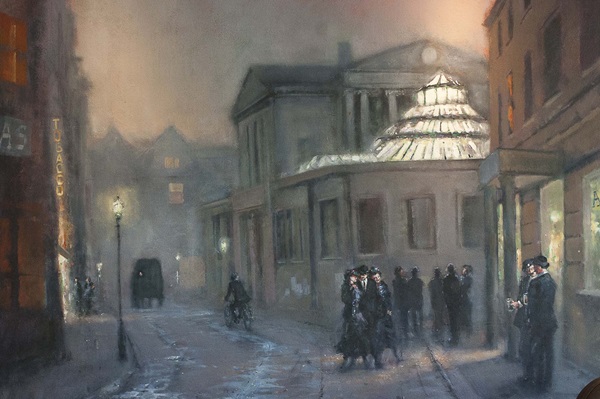
This, the oldest surviving building of its type in Hertfordshire, was built in 1828 and originally had a statue of Ceres, the Greek goddess of agriculture over the main entrance. In 1890 this was replaced by the rotunda, installed to give the traders more light and reduced the risk of fraudulent transactions. The rotunda remained until 1972 when Mr Burt a civil engineer who lived and worked in Bishop’s Stortford stepped in and oversaw the extensive restoration of this wonderful listed building sitting in the heart of the town.
A photograph of Station Road, c1890-1900.
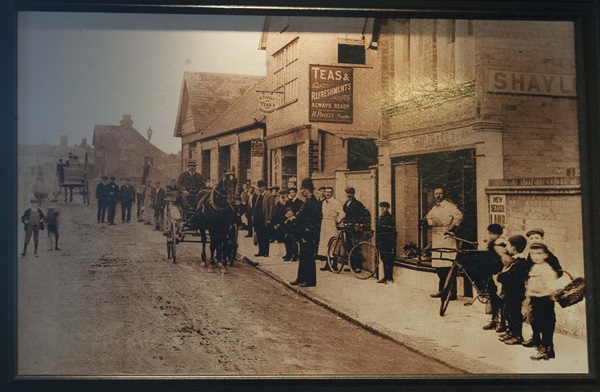
An old photograph of Bishop’s Stortford.
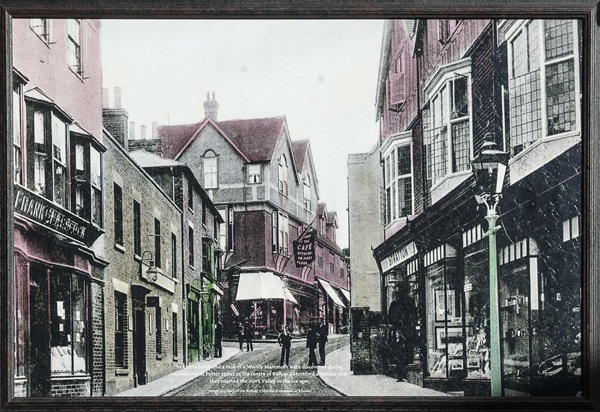
In 1900 a tooth and a tusk of a woolly mammoth were discovered during excavations at Potter Street in the centre of Bishop’s Stortford, evidence that they roamed the Story Valley in the ice age.
A photograph and text about Water Lane.
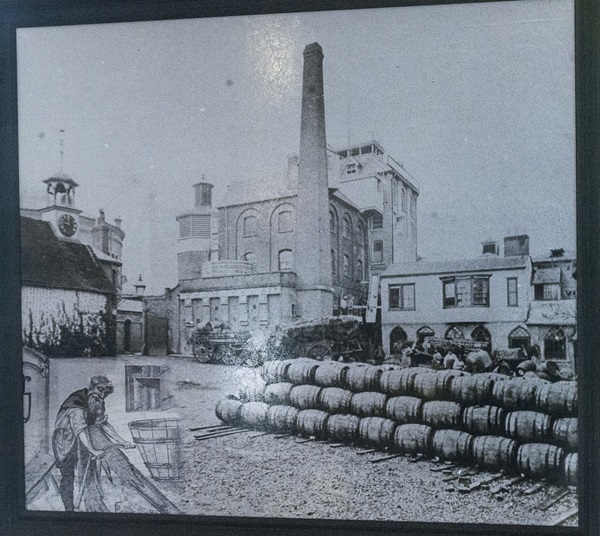
The text reads: Water Lane, or Watery Lane was the original ancient name derived from the fact that it ran parallel with the original river course. Only once has the lane’s name changed when shortly after 1780 Hawkes Brewery was established and the corresponding part named Brewery Lane. The brewery was founded with money earned from supplying malt to the London breweries via the Stort Navigation opened in 1769. In the 15th century, Water Lane was the centre of the town leather tanning industry, profoundly important to the economy at the time.
Coincidently both brewery and tanning industries require a free supply of fresh water and both create a foul stench, a fat which would have made Water Lane well remembered or avoided.
A painting entitled Old Stort Maltings, by local artist Ray Whyard.
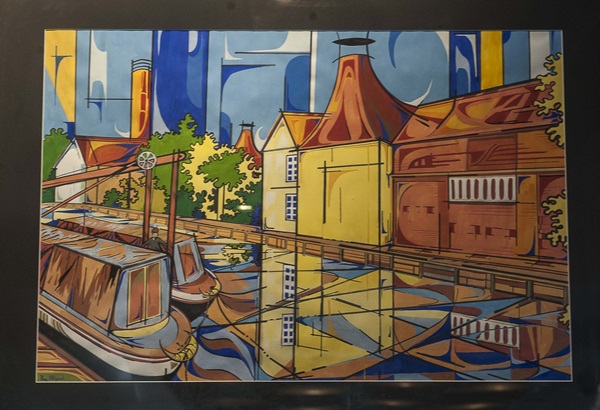
External photograph of the building – main entrance.
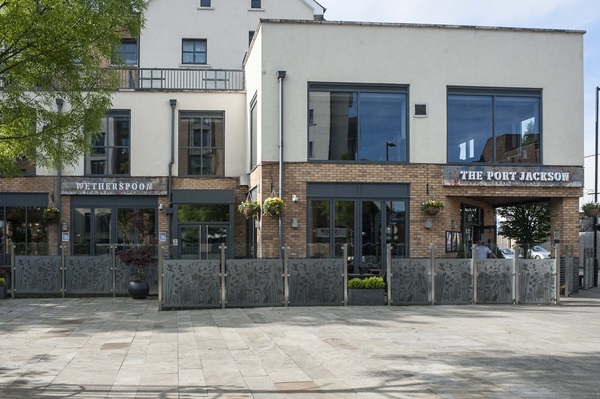
If you have information on the history of this pub, then we’d like you to share it with us. Please e-mail all information to: pubhistories@jdwetherspoon.co.uk